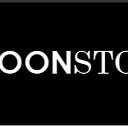Small Business Owners, Follow These 5 Logistics Management Tips
Supply chain and logistics management, when done properly, can be a harmonious symphony of warehouses, trucks and vendors. All parts work like a well-oiled machine to deliver a product undamaged, on schedule and to the satisfaction of a customer.
Related Post: Best Logistics Management Software for Small Business
On the other hand, an ineffective, poorly planned and incoherent supply chain can potentially deliver a fatal blow to the average small and midsized business (SMB). Unexplained charges on customer receipts, delivery sent to the wrong location and products lost in transit can cause complaints that are powerful enough to push customers to abandon ship and choose a better provider.
If you’re running a small business, you’ll need to have an effective logistics strategy. This doesn’t simply mean relying on a trusted delivery company, such as Singapore Delivery Services, for your forwarding and receiving needs. Entrepreneurs need to master their logistics to stand out from the competition, boost customer satisfaction and make their business more cost-effective.
Take note of the following logistics management tips and apply them to your small business:
1. Never Lose Sight of Your Customer
Regardless of what you do, you should always focus on your customer.
Even while you’re pursuing cost controls, look for innovative ways to satisfy your customers. A survey published by the research firm Supply Chain Insights revealed that less than half of respondents scored their ability to respond to customers as excellent or good. When you’re working on improving your logistics, customer communication is vital.
Come up with mechanisms to keep customers in the loop when a product or item delivery is going according to plan — and when it isn’t. If there will be a delay in shipment, notify the customer as soon as possible. Don’t wait until the customer files a complaint.
Most customers are fairly reasonable people. They understand that mishaps may occur. How you respond to these mishaps is what separates an outstanding service from a mediocre one.
Also Read: 5 Advantages Of A Multi-Layer IT Strategy
2. Use Technology to Your Advantage
The internet is not just a place to do research, learn new things or communicate with friends and family.
Thanks to the Internet of Things (IoT), you can keep tabs on a broad range of events affecting the transportation of your products. Both you and your customers should be able to tell the location of the item or product at any given point in time. When you provide your customers with direct access to tracking information, you eliminate the burden of keeping them constantly updated.
3. Obtain Competitive Pricing
Performing a comparison between different providers is business 101. Unfortunately, not many small businesses do this. Instead, they opt for the first logistics company that comes to mind. This is somewhat understandable at some level, as small businesses don’t have the luxury of numerous workers, some of whom specialize in logistics handling.
The good news is that the internet has made searching for the ideal service provider a lot faster, easier and more affordable. As a small business owner, remember to get quotes from multiple carriers and find out if the prices provided to you are negotiable. The lowest cost isn’t always what your business needs. When you evaluate multiple carriers, don’t forget to compare like for like.
4. Track Your Expenses
Keep a close eye on your dollars and pennies. Logistics management is a way of getting products to your valued customers. It is, therefore, a cost of doing business. You need to always be on the lookout not to provide a distribution and delivery service at below cost.
Take the time to break down your logistics process. Then, obtain a clear view of what every element costs you. Using this knowledge, you can transfer the cost indirectly or directly to the customer.
You also have the option to cut down or get rid of this cost as part of your company’s occasional product promotion campaign. Your goal should be to figure out the cost of moving an item from one location to another if you’re going to make well-informed pricing decisions.
Also Read: Make Money While Others online voting tool
5. Improve Your Company’s Sales and Operations (S&OP)
Effective S&OP planning can help you understand when you might need overtime or new equipment. Accurate forecasting will help you plan inventory. You, therefore, should have enough of the right products in place to satisfy customer demand.
Come up with a solid S&OP process that can deliver insight into new product introductions, upcoming promotions or other demand changes. Having an excellent process will make sure that you have adequate (but not too much) inventory on hand.
Supply chain and logistics are crucial for businesses of all sizes. By considering these five tips, your business will be a lot more efficient and organized for both you and your customers.
